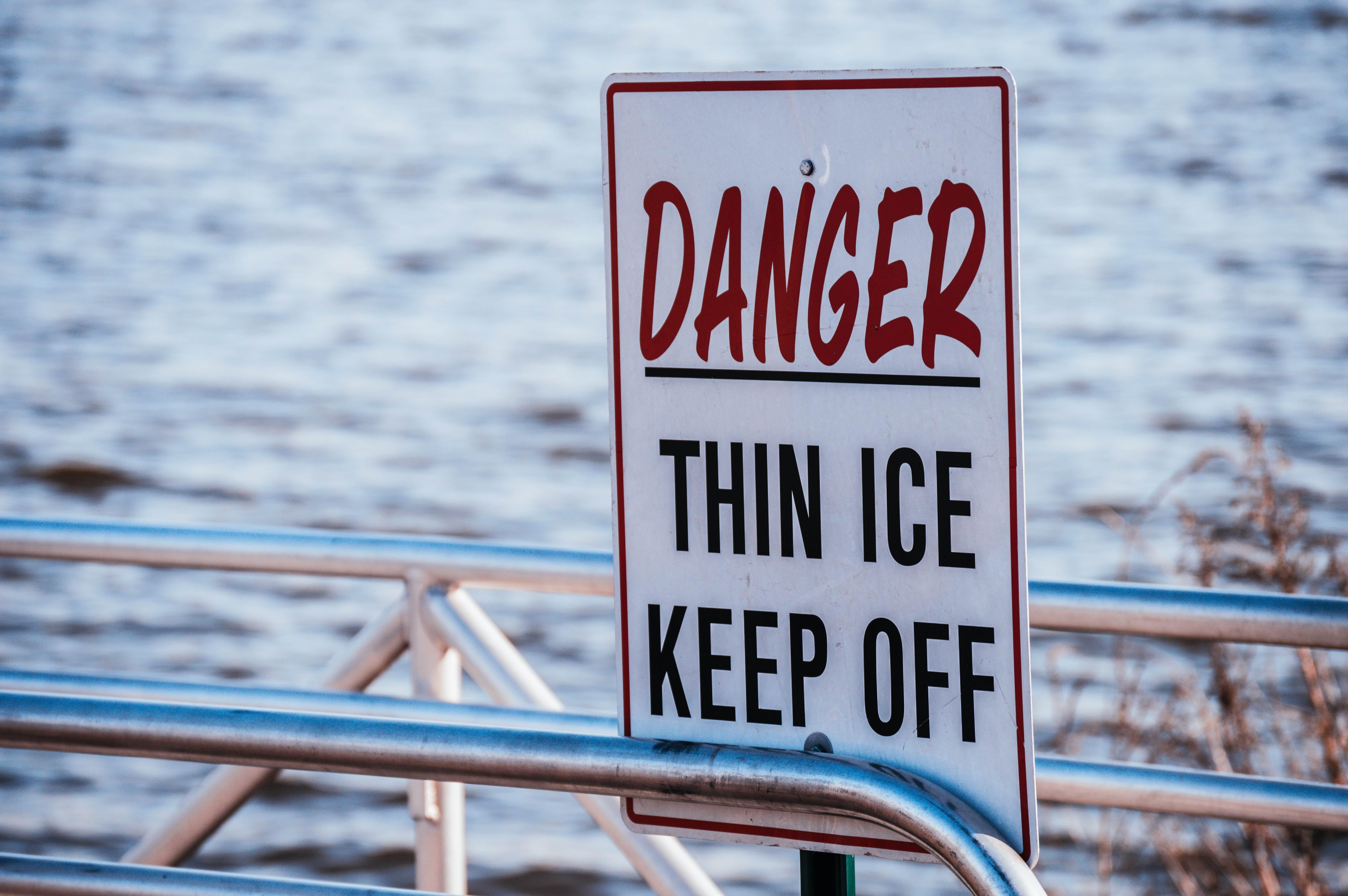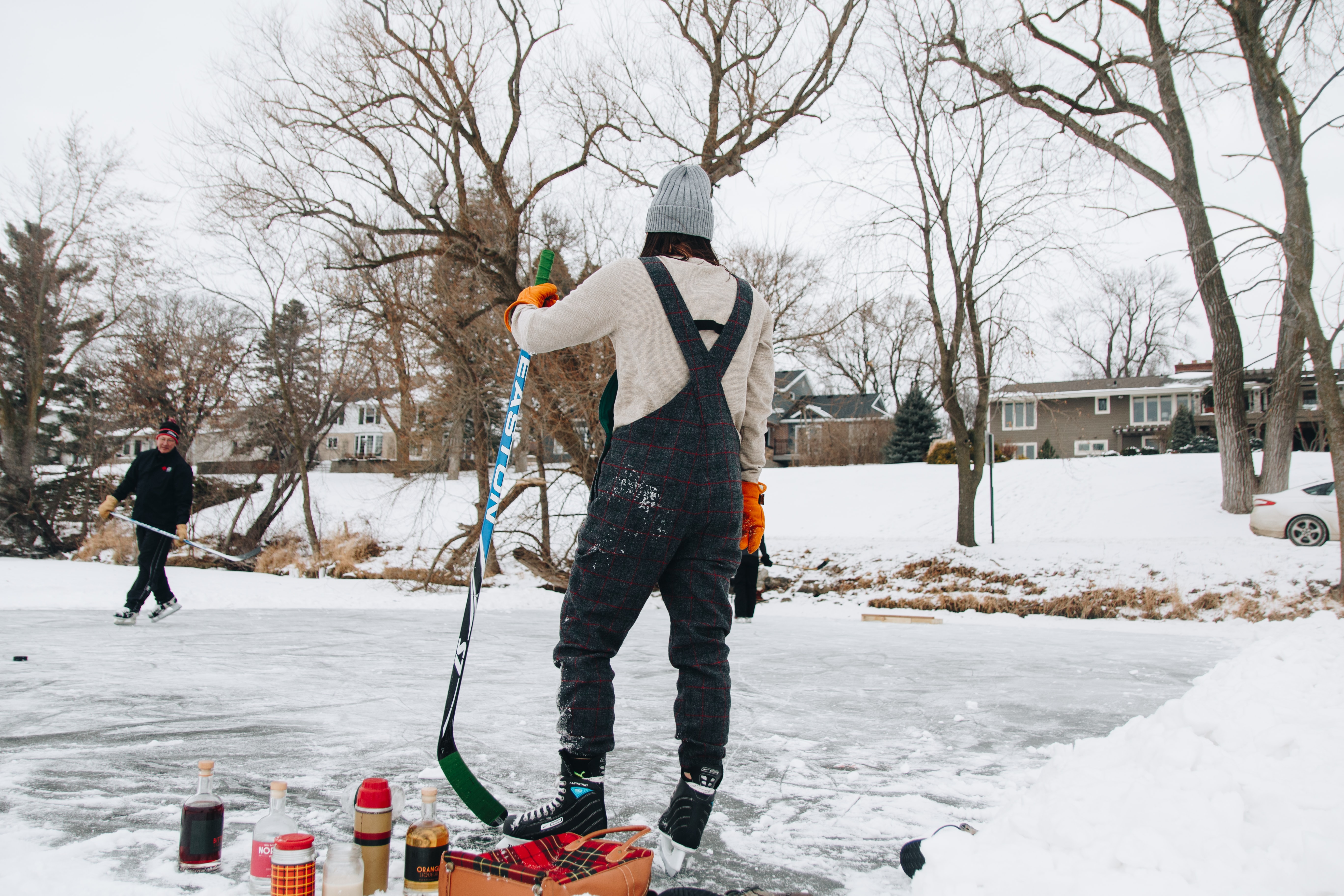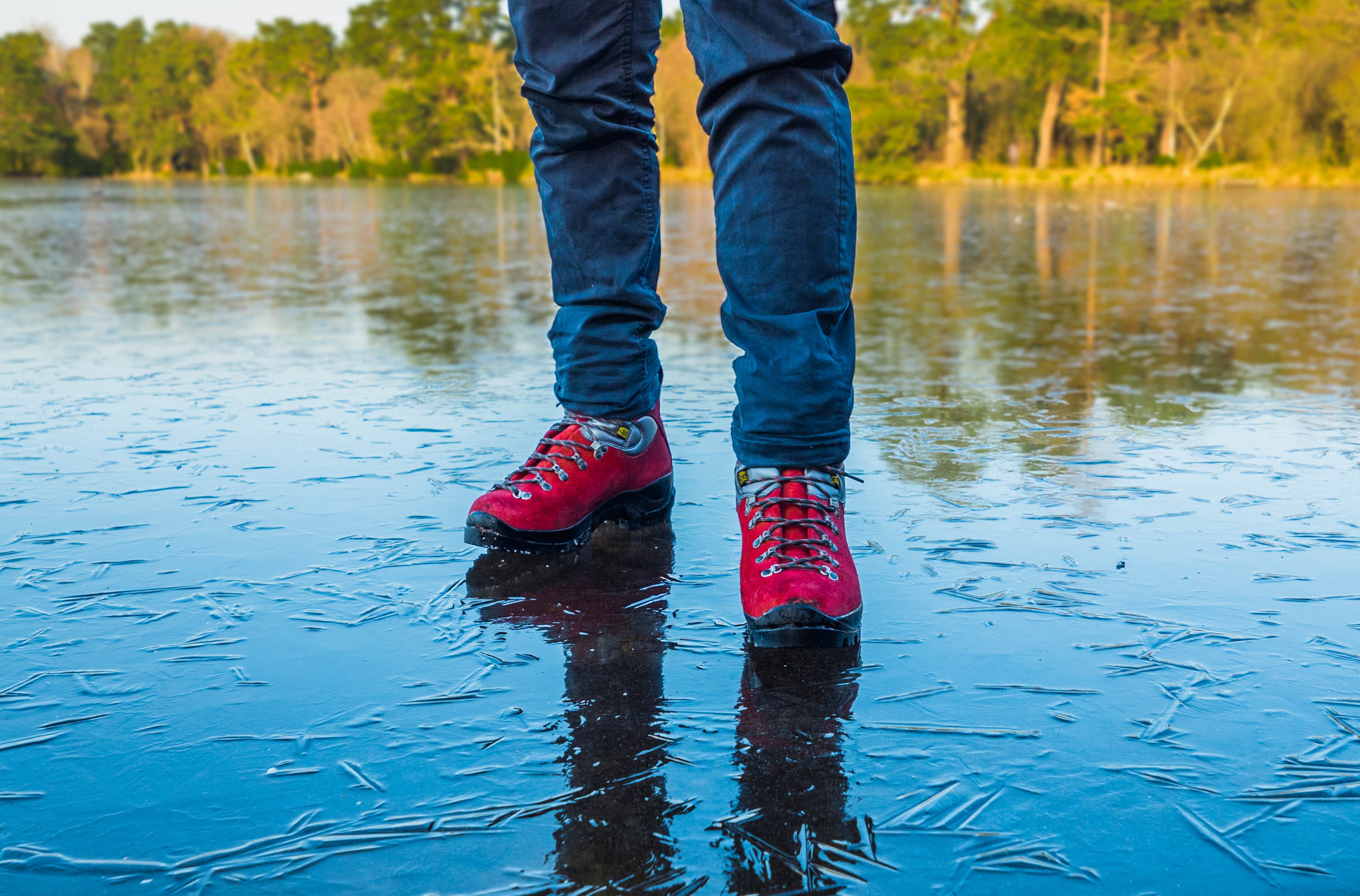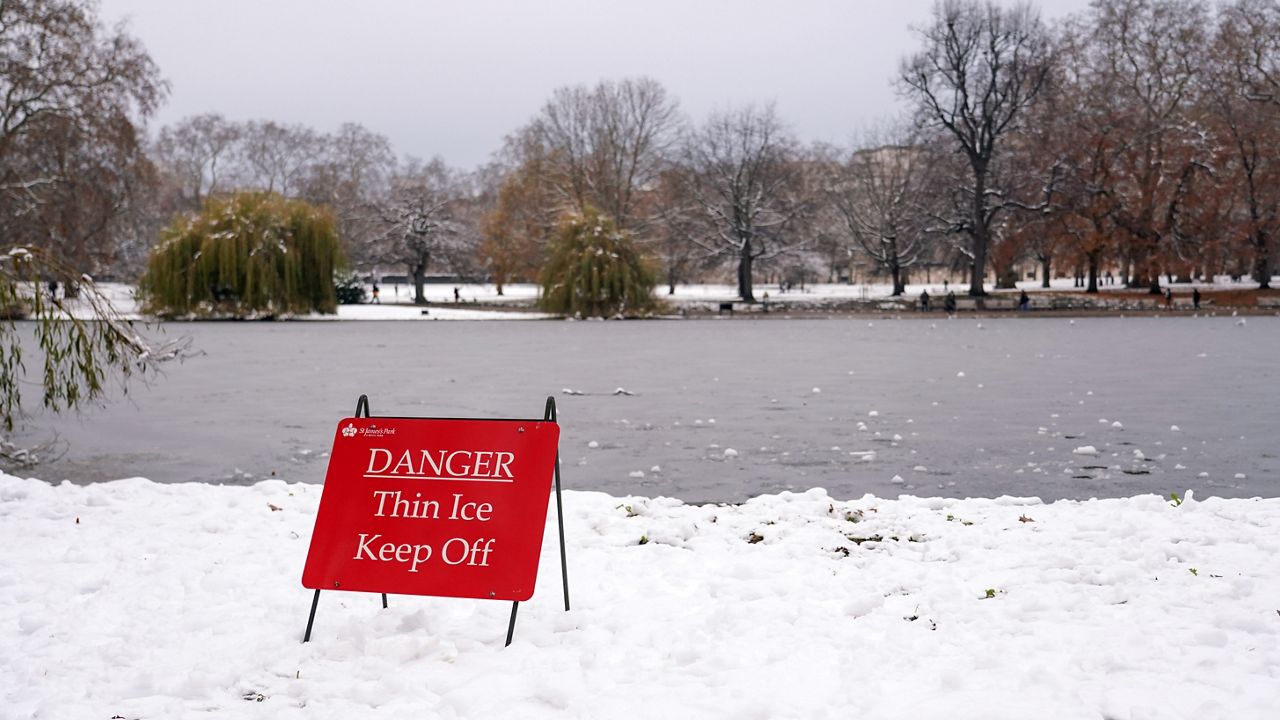Iced-over ponds in the winter can be great fun, but they can also be dangerous. Here’s how to safely have frozen fun this season.
Winter is my favorite season. I love snow and have fond memories of playing on frozen ponds and lakes while I was growing up.
As a meteorologist, though, winter and cold outbreaks make me nervous. It seems like every year that I see tragic stories about people who fall through thin ice.

For ice to be safe to walk on, it needs to be at least four inches thick. To find the thickness of ice, you need special equipment to drill through the ice and then take a measurement.
Most of us don’t have these tools or expert knowledge. To avoid an accident, you should only go on frozen ponds where experts have done measurements and deemed it safe.
Some towns and communities will do this in the winter. If you aren’t sure, stay on shore.

Ice can quickly form when temperatures tumble, but it takes more time than you might think for ice to reach the four-inch thickness that experts recommend. On average, it takes four days of below freezing temperatures to form ice that is safe.
Also, this guideline is for ponds and lakes. Frozen streams should never be walked on as they freeze unevenly because of the movement of the water.
Another thing to know is that clear ice is the strongest. White or gray ice is not as strong and should be avoided.

If you fall through the ice, try not to panic. Place your arms and hands on unbroken ice and use your legs to kick you forward.
If you get out of the water, don’t stand back up, roll away from the hole.
If your pet falls through the ice, don’t go in after them. Call 911 for help. You can also try to reach them with a branch.
Every year, tragedies occur from people trying to rescue their pets. Be careful in the winter and don’t throw your pet a stick or a ball near frozen ponds.
If you see a person fall through the ice, try to reach them with an object like a ladder, a stick or rope. Don’t go out on the ice and call 911 for help.
Stay safe this winter!
Our team of meteorologists dives deep into the science of weather and breaks down timely weather data and information. To view more weather and climate stories, check out our weather blogs section.



